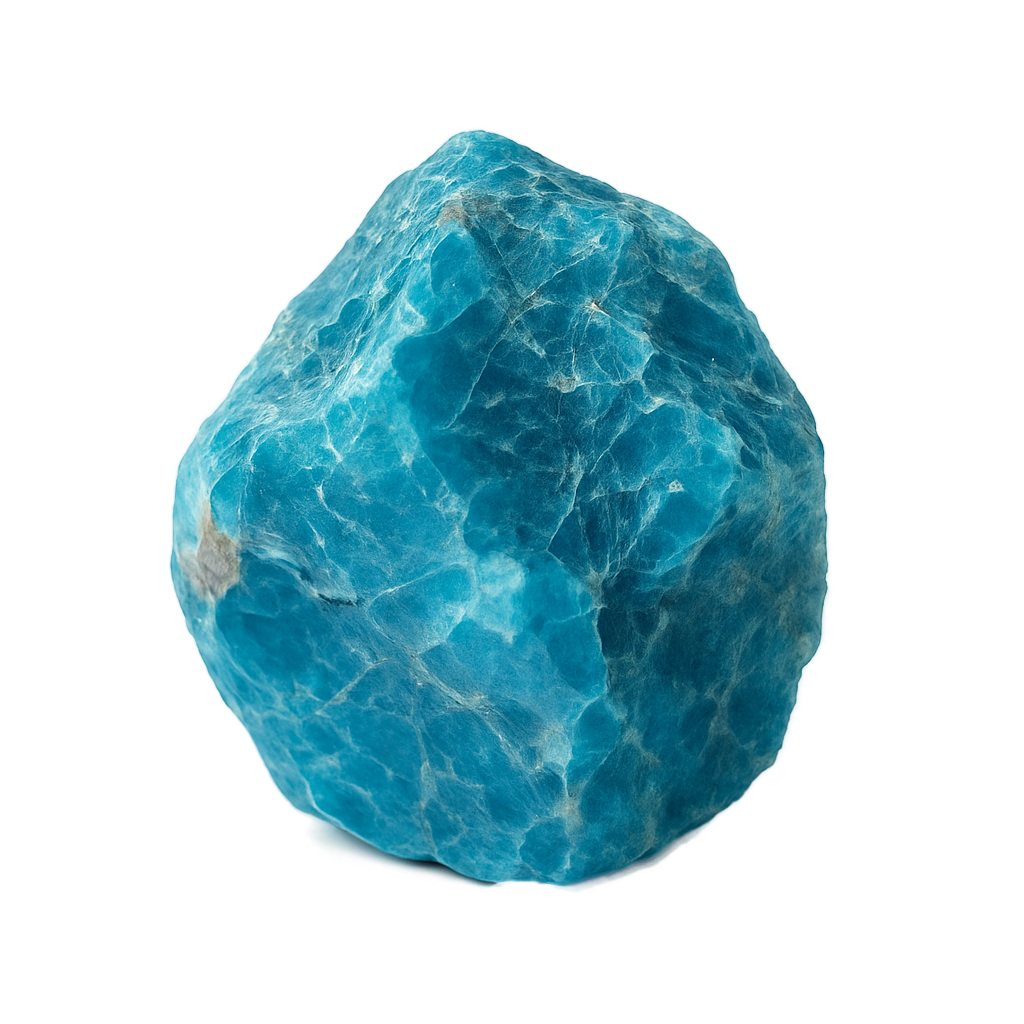BLUE APATITE
Blue apatite intrigues as much as it inspires. Although it was discovered relatively late compared to the great ancient gems, it quickly won us over with its vivid brilliance and shades of deep blue to turquoise. Its name comes from the Greek apataomeaning "to deceive", as it has long been confused with other gems, notably azurite and turquoise. Today, Blue Apatite is recognized for its stimulating energy, its ability to awaken inspiration and encourage the quest for inner truth.
GEM TYPE
CALCIUM PHOSPATE
FAMILY
PHOSPHATE
COLOR(S)
BLUE
MOHS SCALE
5 - 5.5
GEOGRAPHICAL ORIGIN

Canada
Brazil
Madagascar
Russia
Mexico

A little history
Apatite was only identified as a distinct gemstone in the late 18th century, by the German mineralogist Abraham Gottlob Werner. Before that, its crystals were often confused with other, more famous stones. In 19th-century France, blue apatite was used to make natural pigments, notably for frescoes and ceramics, because of its intense color. This artistic use helped to make the stone better known in Europe, outside purely scientific circles.
LITHOTHERAPY
Blue Apatite is a stone of communication, motivation and creative expression:



